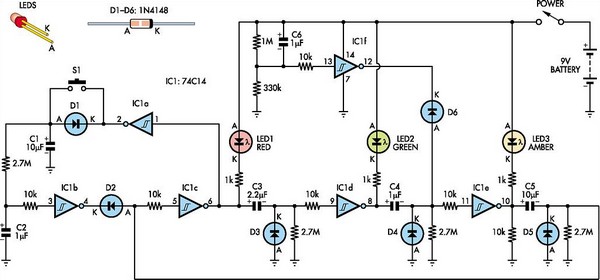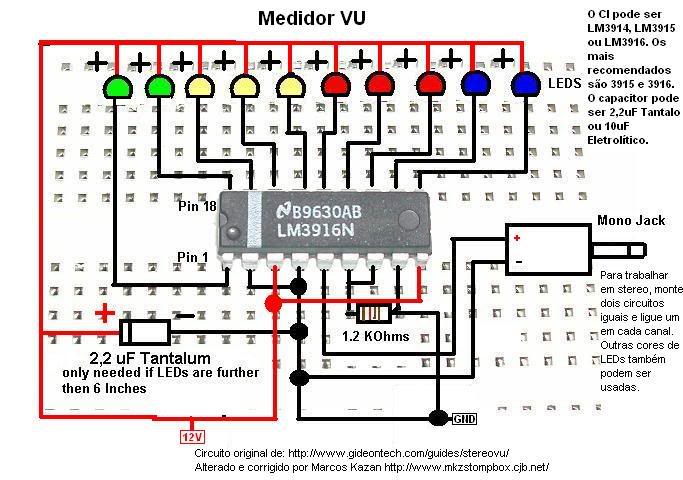
Knightrider lights for model cars

This simple circuit drives six LEDs in a "Knightrider scanner mode." Power consumption primarily depends on the type of LEDs used, especially if a 7555 (555 CMOS version) is utilized.
The circuit operates by sequentially illuminating the LEDs to create a scanning effect reminiscent of the iconic "Knightrider" car. The core component of this circuit is the 7555 timer IC, which is configured in astable mode. This configuration allows the timer to generate a continuous square wave output that drives the LEDs.
The circuit typically consists of six LEDs arranged in a line. Each LED is connected to a current-limiting resistor to prevent excessive current flow, which could damage the LEDs. The output from the 7555 timer is connected to a series of transistors or directly to the LEDs, depending on the design, allowing for the sequential lighting of the LEDs.
The frequency of the LED scanning effect can be adjusted by changing the values of the resistors and capacitors connected to the 7555 timer. By selecting appropriate resistor and capacitor values, the timing intervals can be modified to create different scanning speeds.
Additionally, the choice of LEDs impacts the overall power consumption of the circuit. Different LED types have varying forward voltages and current requirements, which should be taken into account when designing the circuit.
In summary, this circuit provides an engaging visual effect through the sequential illumination of LEDs, driven by a 7555 timer IC, with power consumption influenced by the LED selection and circuit configuration.This simple circuit drives 6 LEDs in `Knightrider scanner mode`. Power consumption depends mainly on the type of LEDs used if you use a 7555 (555 CMOS version) 🔗 External reference
The circuit operates by sequentially illuminating the LEDs to create a scanning effect reminiscent of the iconic "Knightrider" car. The core component of this circuit is the 7555 timer IC, which is configured in astable mode. This configuration allows the timer to generate a continuous square wave output that drives the LEDs.
The circuit typically consists of six LEDs arranged in a line. Each LED is connected to a current-limiting resistor to prevent excessive current flow, which could damage the LEDs. The output from the 7555 timer is connected to a series of transistors or directly to the LEDs, depending on the design, allowing for the sequential lighting of the LEDs.
The frequency of the LED scanning effect can be adjusted by changing the values of the resistors and capacitors connected to the 7555 timer. By selecting appropriate resistor and capacitor values, the timing intervals can be modified to create different scanning speeds.
Additionally, the choice of LEDs impacts the overall power consumption of the circuit. Different LED types have varying forward voltages and current requirements, which should be taken into account when designing the circuit.
In summary, this circuit provides an engaging visual effect through the sequential illumination of LEDs, driven by a 7555 timer IC, with power consumption influenced by the LED selection and circuit configuration.This simple circuit drives 6 LEDs in `Knightrider scanner mode`. Power consumption depends mainly on the type of LEDs used if you use a 7555 (555 CMOS version) 🔗 External reference





